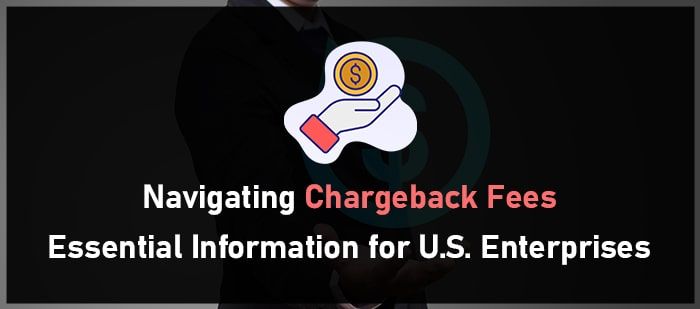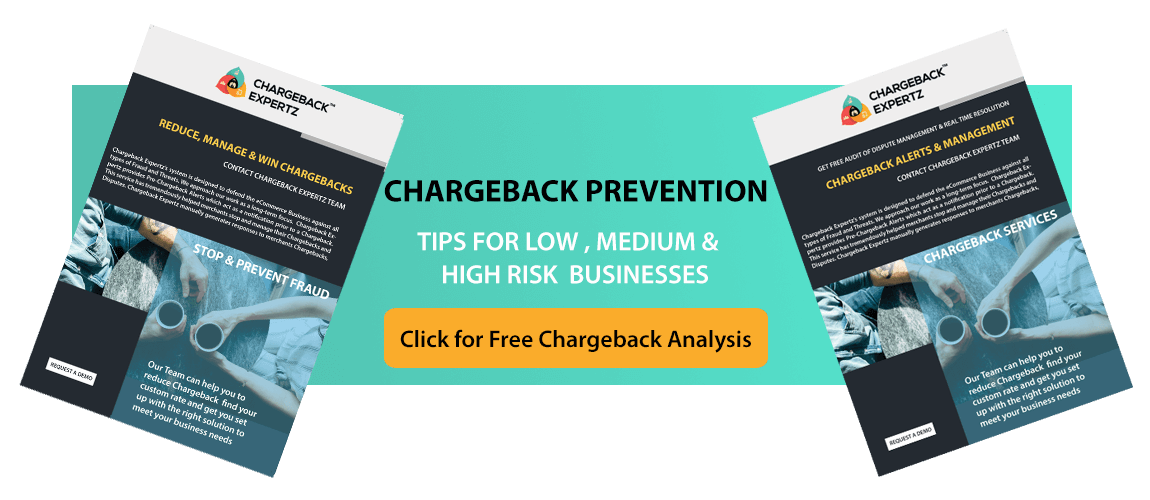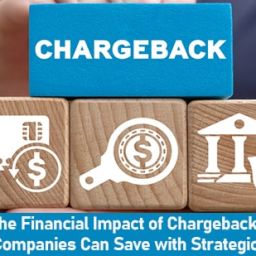
For U.S. enterprises, managing chargebacks is a critical aspect of maintaining a healthy bottom line. Chargeback fees can significantly impact profitability, making effective chargeback fee management essential for businesses of all sizes. Understanding the reasons behind chargebacks and implementing strategies to reduce chargeback costs can not only enhance cash flow but also improve customer relationships.
By analyzing transaction data, identifying patterns, and proactively addressing potential disputes, companies can create a more robust defense against chargebacks. This blog post will delve into the intricacies of chargeback fees, exploring best practices and innovative solutions to help U.S. enterprises navigate this challenging landscape and safeguard their revenue.
Understanding Chargeback Fees
Chargeback fees are charges imposed on merchants when a customer disputes a transaction and it is reversed by the bank. These fees cover the administrative costs associated with processing the chargeback and can vary depending on the payment processor and the type of transaction. In the U.S., typical chargeback fees range from $20 to $100 per incident, but they can be higher for high-risk industries or repeated disputes. Understanding the structure of these fees is crucial for businesses to accurately assess their financial impact.
Several factors influence the likelihood and cost of chargebacks, including the nature of the business, the payment methods used, and the customer base. For instance, e-commerce businesses may face higher chargeback rates due to the card-not-present nature of transactions. Furthermore, recurring billing models can also increase the risk of chargebacks if customers forget about subscriptions or feel misled.
To mitigate these costs, it’s important for enterprises to work closely with their payment processors and maintain transparent communication with customers. By comprehensively understanding how chargeback fees are assessed and the common triggers, businesses can better navigate the complexities of chargeback management.
Some Related Blogs
- Proven Chargeback Representment Techniques for U.S. Businesses
- How to Establish a Strong Chargeback Prevention Strategy for U.S. E-Commerce Firms
- The Impact of the 2024 Payment Services Directive (PSD2) on U.S. Chargeback Processes
- Chargeback Dispute Resolution: Best Practices for U.S. E-Commerce Retailers
Legal and Regulatory Framework
In the U.S., the legal and regulatory framework governing chargebacks is primarily dictated by credit card networks such as Visa, Mastercard, American Express, and Discover. Each network has its own set of rules and procedures for handling chargebacks, which merchants must adhere to in order to avoid penalties. Federal regulations, including the Fair Credit Billing Act (FCBA), also play a role by protecting consumers from unauthorized charges and billing errors, which can trigger chargebacks.
The FCBA mandates that consumers have the right to dispute charges and requires card issuers to investigate claims within a specified timeframe. Additionally, the Payment Card Industry Data Security Standard (PCI DSS) sets guidelines for the secure handling of cardholder information, aiming to reduce fraud and subsequent chargebacks. Non-compliance with PCI DSS can result in hefty fines and increased chargeback rates.
Merchants should also be aware of state laws that may impact chargeback processes. It’s essential for businesses to stay updated on both federal and state regulations to ensure compliance and minimize the risk of chargebacks. By understanding the legal landscape, U.S. enterprises can better navigate chargeback disputes and implement practices that align with regulatory requirements.
Identifying Common Chargeback Triggers
Chargebacks can stem from a variety of triggers, and recognizing these common causes can help U.S. enterprises take proactive measures. One prevalent trigger is fraud, including both true fraud (where a card is used without the owner’s consent) and friendly fraud (where a customer disputes a legitimate transaction). Errors in billing or incorrect transaction amounts can also lead to chargebacks, as customers may not recognize or agree with the charges on their statements.
Poor customer service or failure to deliver promised goods and services are additional common triggers, as dissatisfied customers may feel compelled to seek refunds through their bank. Inconsistent or unclear return policies can further exacerbate chargeback incidents, as customers may dispute charges if they believe they cannot easily return items.
Lastly, issues related to recurring billing, such as customers forgetting about subscriptions or feeling deceived by hidden terms, can also prompt chargebacks. By identifying these triggers, businesses can implement targeted strategies to minimize chargeback occurrences and better manage their financial health.
Effective Chargeback Prevention Strategies
To effectively prevent chargebacks, U.S. enterprises should prioritize clear communication and robust fraud prevention measures. Start by ensuring that product descriptions, pricing, and return policies are transparent and easily accessible to customers. This can reduce misunderstandings and disputes over transactions.
![]()
Email us anytime!
Email customer service 24/7
![]()
Call us anytime!
Reach customer care 24/7 at +1 (888) 901-8653
Additionally, invest in advanced fraud detection tools that monitor transactions in real-time and flag suspicious activity. Using Address Verification Services (AVS) and Card Verification Value (CVV) codes can further authenticate transactions and prevent unauthorized usage. Enhancing customer service is another key strategy; prompt and satisfactory resolution of customer inquiries can deter them from initiating chargebacks.
For businesses with subscription models, sending reminder notifications before billing can help prevent disputes arising from forgotten subscriptions. Keeping thorough records of all transactions, including customer communications and delivery confirmations, can provide crucial evidence in the event of a chargeback dispute.
Training staff on chargeback policies and response protocols ensures everyone is equipped to handle potential issues proactively. By combining these strategies, businesses can create a multi-layered approach to chargeback prevention, thereby safeguarding their revenue and maintaining strong customer relationships.
Managing Chargebacks When They Occur
Managing chargebacks when they occur requires a systematic and informed approach. First, ensure that your business has a streamlined process for receiving and responding to chargeback notifications from payment processors. Swiftly gather all pertinent documentation, such as transaction records, customer communications, and proof of delivery or service. This information will be crucial in building your case when disputing a chargeback.
Analyze each chargeback to identify its root cause, whether it’s fraud, a customer service issue, or a billing error. Understanding the underlying issue can help in crafting a more effective response and also in preventing future occurrences. Use the chargeback reason codes provided by credit card networks to categorize and address each dispute appropriately.
Collaborate closely with your payment processor to follow the correct procedures for responding to chargebacks. They can offer valuable insights and support in navigating the dispute process. Additionally, make sure to adhere to the timelines set by credit card networks for submitting your response; missing deadlines can result in automatic losses.
Finally, review the outcome of each chargeback to refine your chargeback management strategy. Use the lessons learned to adjust your processes, whether that means improving customer service, enhancing fraud detection, or revising billing practices.




